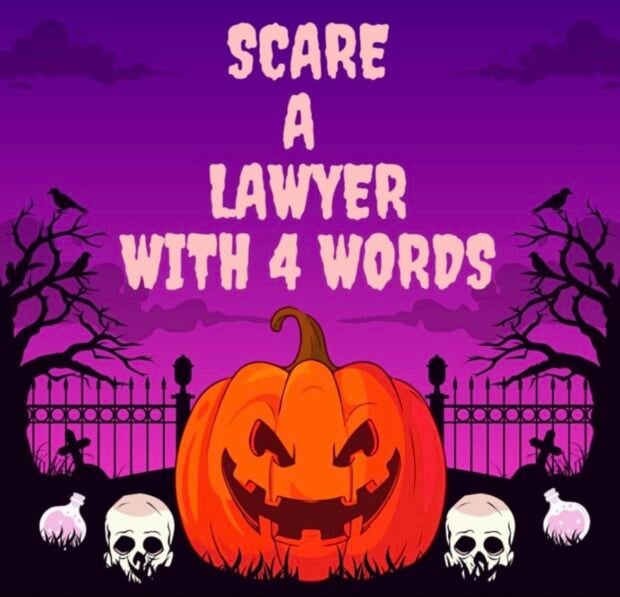
Not
to
sound
too
old,
but
when
I
was
growing
up
there
were
only
a
few
choices
for
digesting
content.
Since
I
wasn’t
much
of
a
reader,
it
came
down
to
flipping
through
the
five
channels
we
had
on
our
TV
set
or
listening
to
groovy
tunes
on
the
radio
(with
lots
of
commercials).
It
was
a
simpler
time
in
the
’80s
which
I
romanticize
daily
as
I
sadly
doomscroll
on
my
iPhone
multiple
times
a
day.
For
lawyers
looking
to
create
content
back
then,
it
was
speaking,
writing
or,
maybe,
getting
publicity
on
a
big
case
in
the
newspaper.
Also,
back
then,
marketing
and
advertising
were
frowned
upon
—
and
against
most
rules
of
professional
conduct.
Fast
forward
to
today’s
legal
marketing
environment,
it’s
like
we’re
living
on
a
different
planet.
Lawyers
are
all
over
billboards,
on
TV,
and
have
unlimited
access
to
promotion
on
social
media.
While
it
doesn’t
hurt
to
have
a
massive
budget
for
marketing
and
advertising,
social
media
has
really
leveled
the
playing
field
for
many
lawyers
and
law
firms.
The
question
I
have,
my
dear
readers,
is
this,
“Are
you
playing
in
the
game
or
sitting
on
the
sidelines
watching?”
As
one
of
the
top
content
creators
in
the
legal
space,
I’m
feeling
very
confident
when
advising
my
clients
on
thought
leadership
and
social
media
best
practices.
Many
of
them
are
hesitant
to
get
started
and
“put
themselves
out
there.”
The
good
news
is
this:
whether
you
are
currently
creating
and
sharing
content
or
not,
I’m
going
to
simplify
this
down
into
four
easy
steps
to
help
you
get
the
most
from
your
efforts.
Step
1:
Shift
Your
Mindset
First
off,
remove
the
head
trash
that
it’s
all
about
selling
or
shamelessly
promoting
ourselves,
it’s
not.
The
goal
is
to
educate
and
inform
to
drive
attention
and
interaction.
So,
get
your
mind
wrapped
around
this
and
think
about
the
content
your
clients
or
referral
partners
would
be
interested
in
seeing.
For
me,
it’s
sharing
clips
of
interviews
I
do
on
my
BE
THAT
LAWYER
podcast
to
highlight
the
guest
on
my
show.
It’s
all
very
apropos
for
lawyers
looking
to
grow
their
law
practices.
I
would
suggest
making
a
list
of
the
topics
that
you
know
well
and
that
solve
the
problems
that
your
target
audience
may
have.
Additionally,
think
about
what
platforms
are
best
for
your
content
—
is
it
LinkedIn,
Facebook,
or
TikTok?
If
you’re
B2B,
LinkedIn
is
king.
If
you’re
B2C,
you
have
a
variety
of
options
and
choices.
Step
2:
Choose
Your
Format
Are
you
a
better
speaker
or
writer?
Do
you
enjoy
interviewing
others
or
being
interviewed?
Are
you
someone
who
is
well
read
and
who
can
easily
discuss
the
news
of
the
day
and
how
it
affects
your
clients?
For
example,
what’s
going
on
with
non-competes
in
the
employment
law
space?
I
have
no
idea
but
would
sure
like
to
know
or
be
updated.
Do
your
best
as
a
perfectionist
attorney
to
avoid
“analysis
by
paralysis”
when
it
comes
to
content
creation.
If
you
overthink
it
and
never
execute,
no
one
wins.
As
Nike
says,
“Just
Do
It!”
It
helps
to
be
prepared,
so
knowing
who
your
target
audience
is,
what
you
want
to
communicate
to
them
and
selecting
your
platform
will
be
all-important
in
setting
this
ship
to
sail.
Step
3:
Start
Creating
Content
Write
an
article
or
a
blog
post
on
your
website
or
on
LinkedIn.
On
your
phone,
create
a
video
less
than
one
minute
long
on
something
topical
to
your
field.
Construct
something
in
10
minutes
and
put
it
up
on
the
platform
you’ve
selected.
Try
to
engage
your
audience
by
asking
a
question
or
naming
one
or
more
people
in
your
post
who
are
relevant
to
the
subject.
For
example,
when
talking
about
lawyer
coaching,
I
may
add
the
names
of
a
few
respected
coaches
in
my
network.
All
you
have
to
do
is
add
the
“@”
symbol
before
someone’s
name
on
LinkedIn
and
this
will
tag
them
in
the
post.
This
small
step
will
prompt
them
to
comment
and
share
the
post.
Engagement
is
just
as
important
as
the
post
itself.
Another
trick
is
to
post
your
content,
then
go
to
the
top-right
corner
of
the
post
where
the
three
little
dots
live.
Click
the
dots
and
select
“Copy
link
to
post.”
Then
paste
your
post
link
in
an
email
and
send
to
three,
five,
or
10
of
your
best
industry
or
LinkedIn
friends
and
ask
them
to
share
and
comment
on
your
post.
This
significantly
drives
up
the
post’s
interaction
and
gives
you
some
solace
that
it
was
worth
your
time.
By
the
way,
this
last
tidbit
is
worth
its
weight
in
gold,
so
you’re
welcome.
Step
4:
Repurpose
Your
Content
The
key
to
success
in
content
creation
is
to
milk
your
newly
created
content
for
all
it’s
worth.
The
best
investment
I’ve
ever
made
in
my
business
has
been
my
podcast.
I’ve
done
450
shows
in
about
five
years.
Each
show
is
30
minutes
long,
so
Mr.
Math
tells
us
that
I’ve
completed
225
hours
of
content.
I
have
audio,
video,
and
transcripts
of
each
episode.
This
means
I
can
post
the
podcast
itself,
post
the
video
clips
on
LinkedIn
and
YouTube,
and
use
the
transcripts
for
AI-generated
Blogcasts
(articles).
So
even
one
30-minute
episode
breaks
down
into
four
to
eight
pieces
of
content
that
I
can
share.
Another
idea
is
to
create
top
10
lists.
What
are
the
top
10
issues
your
clients
face
that
you
solve?
You
can
then
create
10
videos
in
ONE
SHOOT
on
your
phone.
That
can
be
easily
edited
down
to
10
one-minute
videos.
Put
out
one
a
week
and
you
have
10
weeks
of
content.
This
whole
content
creation
thing
is
like
a
snowball
rolling
downhill.
Once
you
get
it
started
and
stay
consistent
with
it
for
a
month
or
two,
it
just
becomes
a
part
of
your
week.
There’s
nothing
that
says
you
can’t
hand
off
the
posting
of
your
content
to
a
virtual
or
actual
assistant
to
handle
for
you.
I
do,
and
it’s
lovely.
Success
in
content
creation
comes
down
to
preparation
and
consistency.
By
following
this
four-step
process,
you
can
dramatically
improve
your
current
efforts
(or
lack
thereof).
The
marketing
game
is
in
full
swing,
and
I
highly
recommend
you
jump
in
without
delay.
In
marketing
and
business
development,
you’re
either
building
your
personal
brand
or
letting
it
fade
into
obscurity.
If
you
need
guidance,
reach
out
to
an
expert
or
a
friend
who’s
active
in
the
space.
Many
lawyers
prefer
to
handle
things
themselves,
but
if
you
haven’t
started
yet,
now
is
the
time
to
act.
I
hope
to
read
your
latest
blog
on
LinkedIn
soon!
Steve
Fretzin
is
a
bestselling
author,
host
of
the
BE
THAT
LAWYER
Podcast,
and
business
development
coach
exclusively
for
attorneys.
Steve
has
committed
his
career
to
helping
lawyers
learn
key
growth
skills
not
currently
taught
in
law
school.
His
clients
soon
become
top
rainmakers
and
credit
Steve’s
program
and
coaching
for
their
success.
He
can
be
reached
directly
by
email
at [email protected].
Or
you
can
easily
find
him
on
his
website
at www.fretzin.com or
LinkedIn
at https://www.linkedin.com/in/stevefretzin/.






 Jordan
Jordan
 Ken
Ken





